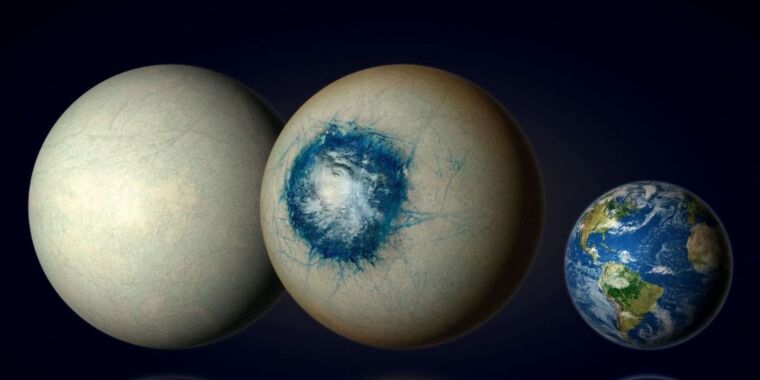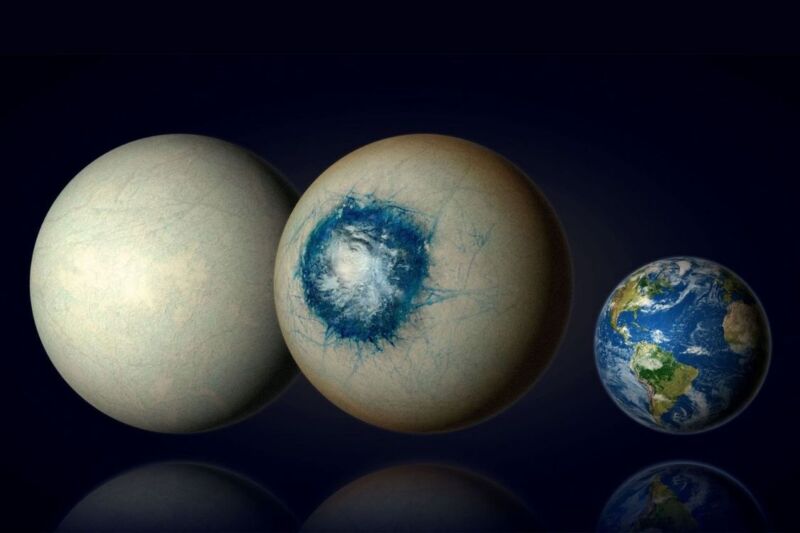

Of all the possible Earth-like exoplanets — terrestrial exoplanets that are more massive than Earth — one orbiting a star just 40 light-years away in the constellation Cetus may be the most similar yet discovered.
The exoplanet LHS 1140 b was thought to be a mini-Neptune when it was first discovered by NASA’s James Webb Space Telescope around the end of 2023. After analyzing data from those observations, a team of researchers, led by astronomer Charles Cadieux of the University of Montreal, suggested that LHS 1140 b is likely a super-Earth.
If this planet is an alternate version of our own, its relative proximity to its cool red dwarf star means it is likely to be a giant snowball or mostly frozen body with a substellar ocean (the region closest to its star) that makes it look like a cosmic eyeball. It is now thought to be the exoplanet with the best chance of having liquid water on its surface, and thus potentially habitable.
Kadio and his team say they have found “interesting evidence that [nitrogen]- The atmosphere dominating the habitable zone of the “super-Earth” in Stady Recently published in The Astrophysical Journal Letters.
Sorry Neptune…
In December 2023, two transits of LHS 1140 b were observed using the NIRISS (Near-Infrared Imager and Slitless Spectrograph) instrument on Webb. NIRISS specializes in discovering exoplanets and reveals more about them through transit spectroscopy, which captures the light of the planet’s host star as it passes through that planet’s atmosphere and travels toward Earth. Analyzing the different spectral bands in that light can tell scientists about specific atoms and molecules present in the planet’s atmosphere.
To test the previous hypothesis that LHS 1140 b is a mini-Neptune, the researchers created a three-dimensional global climate model, or GCM. This uses complex mathematics to explore different combinations of factors that make up a planet’s climate system, such as land, oceans, ice, and atmosphere. Several different GCMs of mini-Neptune were compared to the spectrum of light observed via transit spectroscopy. Typically, mini-Neptune models include a gas giant with a thick, cloud-free or nearly cloud-free atmosphere dominated by hydrogen, but the spectral ranges of this model did not match the NIRISS observations.
With the possibility of a mini-Neptune largely ruled out (although further observations and analysis are needed to confirm this), Cadillo’s team turned to another possibility: a super-Earth.
A land far from Earth?
The spectra observed with NIRISS were more in line with general climate models for a super-Earth. This type of planet typically has a thick layer of nitrogen or carbon dioxide.2– The rich atmosphere surrounding a rocky surface that contains some form of water, either frozen or liquid.
Models also suggest the presence of a secondary atmosphere, which is the atmosphere that forms after the original atmosphere of light elements (hydrogen and helium) escapes during the early stages of planet formation. Secondary atmospheres consist of heavier elements released from the crust, such as water vapor, carbon dioxide, and methane. These atmospheres are typically found on warm terrestrial planets (Earth has a secondary atmosphere).
The most significant data that didn’t match global climate models was that the planet had a lower density (based on measurements of its size and mass) than expected for a rocky world. That’s consistent with a water world with a mass of 10 to 20 percent water. Based on that estimate, the researchers think LHS 1140 b may be a Hessian planet—an ocean planet with most of the features of a super-Earth, but with an atmosphere dominated by hydrogen instead of nitrogen.
Since it orbits a faint star close enough to be tidally locked, some models suggest it is a mostly icy planet with a liquid ocean beneath the star on its dayside.
Although LHS 1140 b may be a giant planet, the Hessian planet hypothesis may end up being ruled out. Hessian planets are prone to runaway greenhouse gases, which occur when enough greenhouse gases build up in a planet’s atmosphere to prevent heat from escaping. Eventually, liquid water on a planet that can’t cool itself will evaporate.
Although we are getting closer to knowing what kind of planet LHS 1140 b is, and whether it is habitable, more observations are needed. Cadillo wants to continue this search by comparing the NIRISS data with data on other giant planets previously collected by Webb’s Near Infrared Spectrometer (NIRSpec). At least three transits of the planet with Webb’s Mid-Infrared Spectrometer (MIRI) are also needed to confirm that stellar radiation is not interfering with observations of the planet itself.
“Given the limited visibility of LHS 1140b, several years of observation may be needed to detect its possible secondary atmosphere,” the researchers said in the same study. Stady.
Could this planet actually be a frozen exo-Earth? The anticipation and anticipation will continue for years.
Astrophysical Journal Letters, 2024. DOI: 10.3847/2041-8213/ad5afa

“Web maven. Infuriatingly humble beer geek. Bacon fanatic. Typical creator. Music expert.”





More Stories
SpaceX launches 23 Starlink satellites from Florida (video and photos)
A new 3D map reveals strange, glowing filaments surrounding the supernova
Astronomers are waiting for the zombie star to rise again